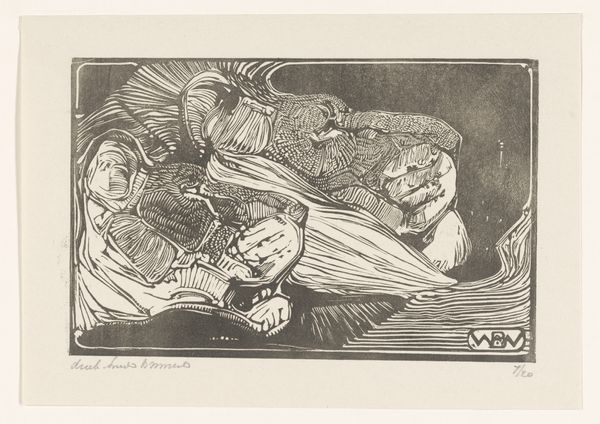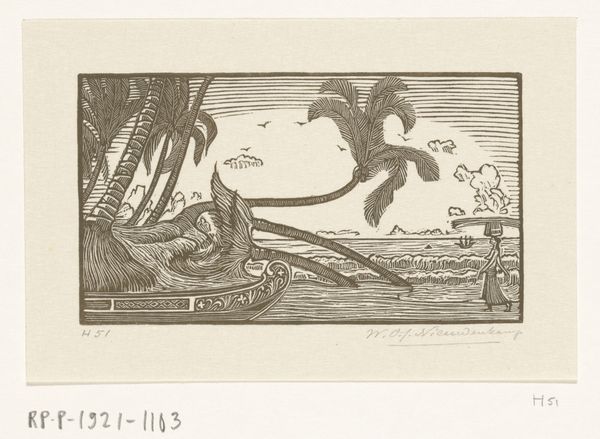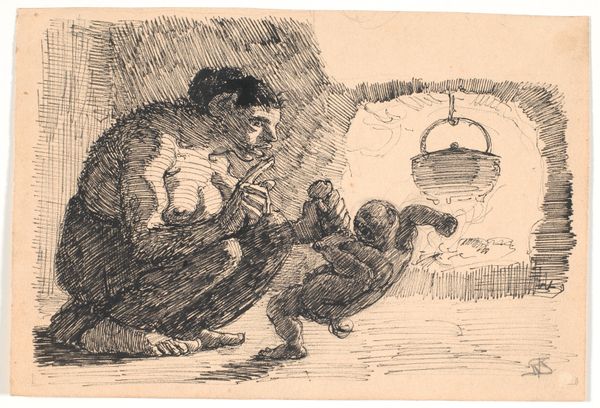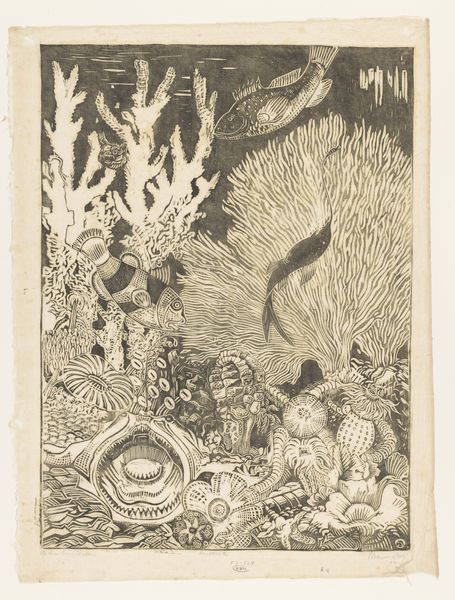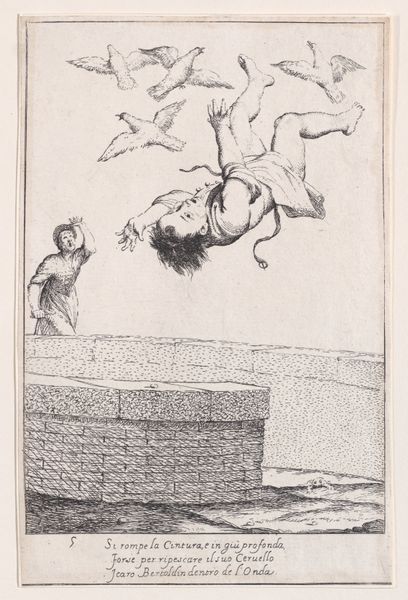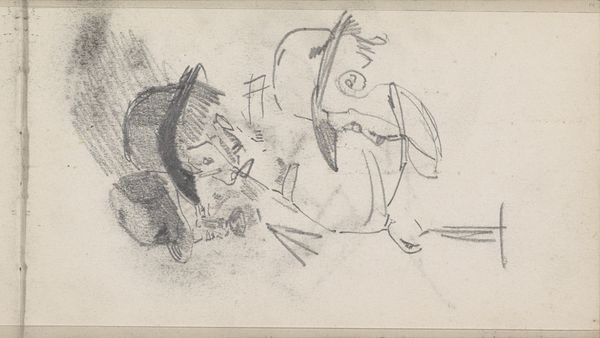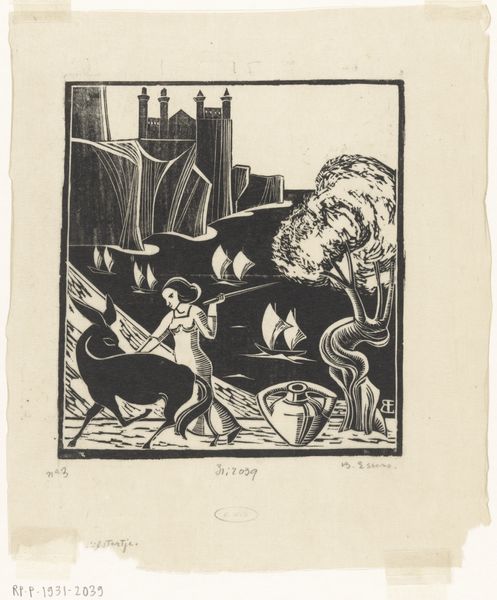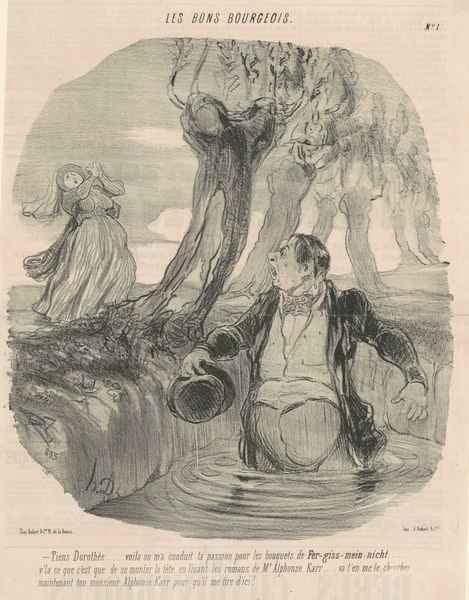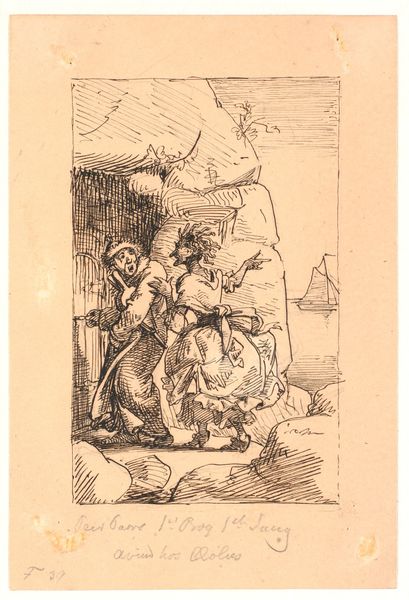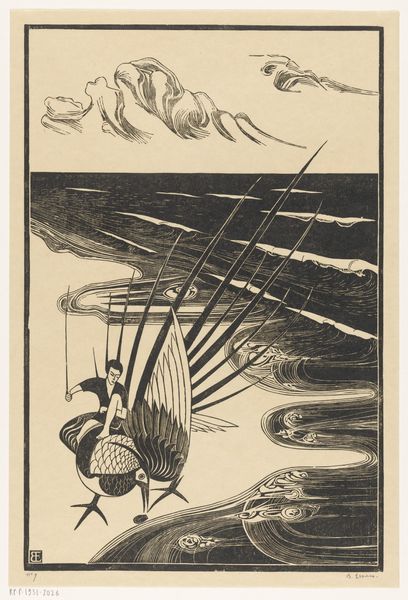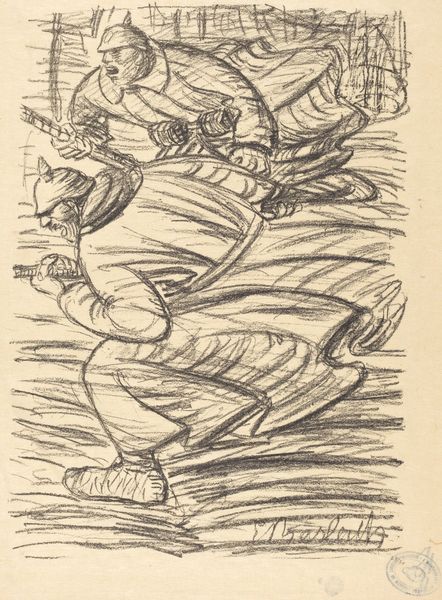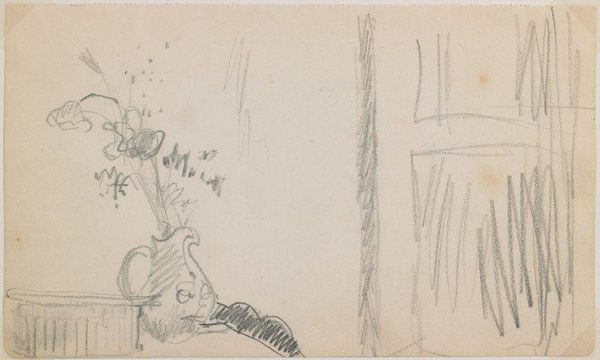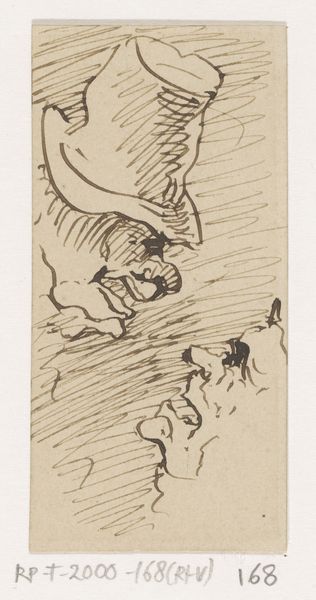
lithograph, print, graphite
#
narrative-art
#
lithograph
# print
#
caricature
#
figuration
#
romanticism
#
graphite
Copyright: National Gallery of Art: CC0 1.0
Curator: Good day. We’re here to look at Honoré Daumier’s lithograph from 1842, "Le Supplice de Tantale" – "The Torment of Tantalus." What catches your eye first about it? Editor: Definitely that visceral expression on the central figure. That grimace is timeless—the ultimate longing captured in graphite. A real physical manifestation of desire and frustration. It reminds me of Goya and that feeling of something deeply sinister just out of reach. Curator: That emotional rawness is quintessential Daumier, definitely. He could telegraph complex human conditions with just a few strokes. Here, we see Tantalus, condemned in Greek mythology to eternal hunger and thirst. He’s chained to a tree, submerged in water, with food and drink forever just beyond his grasp. Daumier really zeros in on the psychological agony, doesn’t he? Editor: Absolutely. Look at how Daumier uses shadow to amplify the effect—the dark washes around the water evoke a feeling of unending depth and despair, the graphite texture is thick with emotion, a sense of constant striving but ultimate emptiness. What strikes me is how it evokes a cycle of promise and denial – a reflection on human desires and limitations? Curator: Precisely. Tantalus becomes this enduring symbol for the unattainable, constantly reminded of what he cannot have. The luscious grapes and the duck still-life practically taunt him, mirroring our own consumer-driven desires maybe? I also notice how the items on offer start to resemble grave stones looming over him… the piece is titled “torment” so Daumier certainly drives the point home, if a bit heavy-handedly. Editor: Yes, the "torment" almost seems overstated and quite literal, though. What a stark vision of the human condition from Daumier, especially given its context from the 1840s, the Age of Enlightenment well in the rearview! Curator: The piece seems so resonant today; perhaps we are all chained in a way, forever chasing something we can't grasp. Editor: It definitely offers a haunting reminder.
Comments
No comments
Be the first to comment and join the conversation on the ultimate creative platform.
